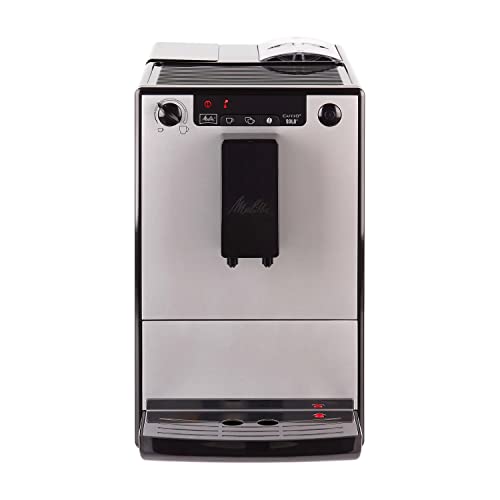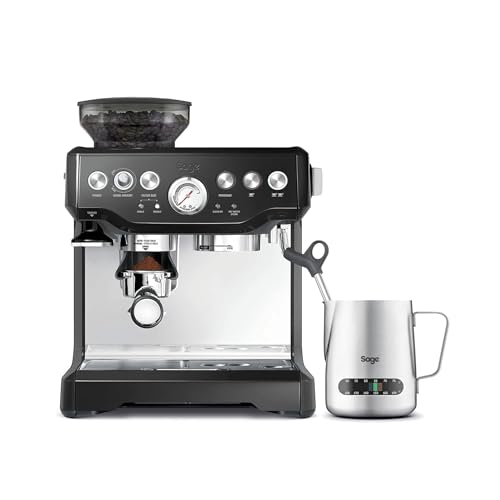자유게시판
| 제목 | Why Machine Coffee Might Be Your Next Big Obsession |
|---|---|
| 작성자 | Rodger |
| 조회수 | 22회 |
| 작성일 | 24-10-21 05:19 |
| 링크 |
본문
 What Goes On Inside a Machine Coffee Maker?
What Goes On Inside a Machine Coffee Maker?small coffee machine machines make it easy to enjoy a cup of coffee at home. The most popular models include an adjustable timer and an integrated grinder.
When you switch on the power the sensors control the heating element, which is circling the warming plate. It also has an aluminum water tube that runs through it.
Cold-Water Tube
A machine coffee maker takes the water you put into it and turns it into your cup of coffee. It does this by boiling the water and passing it through a system that generates high pressure to push it through a capsule made of ground or soluble material. These machines can use up to 15 bar of pressure, as opposed to coffee percolators that only operate at one bar.
There is a reservoir in the bottom of your machine that looks like a bucket and holds the water used to make your drink. The reservoir has a hole in the bottom. It connects one end to the tube that is inside the heating element, and on the other side, to an white tube with an insulation that runs from the bottom of the machine up to the faucet.
When you start your machine, the water inside the reservoir is pushed up into the heating chamber and the thermostat signals it to heat up. As the water warms, it expands. This pushes a screen beneath a portafilter, which is filled with espresso and tamped. This pressure causes the screen be able to penetrate the filter, which allows the espresso to flow into the cup.
The espresso that comes from your machine is a delicious and rich brew. It can come with varying levels of acidity, depending on the type beans you select. If you notice that your coffee has an unpleasant taste Try switching to a different filter paper or a more coarsely ground coffee. If the issue persists, you should call an authorized technician to perform a de-liming process. The most commonly cited cause for this problem is lime scale.
Hot-Water Tube
The white tube that has insulation at the bottom of your machine is called the hot-water tubing. It carries hot water from the heating unit to the faucet that is on the top of your coffee maker. The water then saturates your coffee grounds, bringing their flavor into the pot of coffee you've been waiting for.
Certain coffee makers have the ability to keep the water warm so that it's ready to drink the moment you awake. This is done by using a heater that produces some steam. The steam is then directed into the spout to keep your coffee makers machines warm until able to pour it.
Although it could appear that a coffee machine is complicated and expensive The majority of models are easy to use and have very only a few moving parts. Regular cleaning and maintenance will keep your machine in good condition for a long time.
Many coffee machines with a built-in grinder allow you to add ground coffee from a container, secure the portafilter to its place, then activate the switch inside to begin the brewing process. When the switch is turned on the pump will begin to pressurize water in the heating chamber until it's about 220 psi.
The need to constantly refill the reservoir is among the most frustrating aspects of making coffee. Some manufacturers have created coffee machines that connect directly to a common water line, allowing you to bypass the reservoir completely. There are kits for those looking to make the switch themselves. They can convert any machine into an espresso maker that connects directly to a home water line. This process is a little more complicated and requires drilling holes into your machine to accommodate an adapter. This could weaken the structure of your coffee maker and cause cracking around the drilled areas. It is recommended that you purchase a specially-built coffee maker that is designed to take an open water line for best results.
Resistive Heat Element
The heater is made from metal and has a special resistance to electricity. It limits current flow but not stopping it entirely and some of the energy that is resisting it is turned into heat. This is the way the boiler in your coffee maker heats the water.
The heating element is located on the left-hand side of the machine's base. It is shaped like the filament of a lightbulb, or the component of an electric toaster. It is composed of an aluminum extrusion in two sections, with a tube to allow water to flow, and a resistive element. (Watch the video here). The resistance of the coiled wire makes it warm up when it receives energy.
When you turn on your coffee maker the element starts heating the aluminum water tube until it starts to boil. The bubbles will rise up through the white tube, and then be sprayed on your coffee beans using the shower head. The water that is sprayed picks up the essential oil of the ground Coffee Machine Automatic beans on its way down and it also has caffeine.
If your coffee maker isn't release hot water, it's most likely that the heating element or pressure switch thermostat is faulty. Both of these can be checked using a multi-meter conducting a continuity test. Connect one pole to the electrical connector, and the other to body of the flange. It should read a value below 1. If the reading is not there, then you will have to replace the thermostat or switch.
The water pump or reservoir is another part of your machine that could cause issues. It is prone to getting clogged with lime and that's the reason you should run a mixture of water and descaling solution through it.
Warming Plate
A warming plate is a heated surface that keeps coffee warm in a cup after it has been made. This feature is popular among those who enjoy small coffee machine at a restaurant and can be a useful feature to have in a kitchen at home. However the warming plate can be rusty and alter the flavor of the coffee, making it crucial to clean it frequently. The best method to clean a coffee maker heating plate is to use a mixture of oxalic acid and water.
Oxalic acid can be utilized as a powerful cleaner to remove the rust from pipes, sinks and gas stove burners. It can also be used for cleaning many other household objects. It is a highly efficient solution to clean the rusty warming plate in your coffee maker, and it is available at most hardware stores. You must be cautious when using this product as it can cause burns and other injuries if it is not handled correctly.
If you want to clean a rusted coffee maker heating plate first, ensure that the coffee maker is disconnected. This will help prevent any damage caused by the heat generated by the cleaning products. You should also wear rubber gloves as the oxalic acids can be very harsh on your skin.
Next next, you should pour some white vinegar on the rusty area of the coffee maker's heating plate. This will react chemically with the baking soda and dissolving the rust. Then, scrub the area with an abrasive or rag until it is completely clean. You may have to repeat this procedure multiple times if your coffee maker is rusted heavily. Make sure that the oxalic acid has completely evaporated before plugging your coffee maker back into and begin using it again.
Aluminum Water Tube
The machine will begin making coffee the moment you turn it on. It appears to be it's easy enough, but there's plenty going on the machine to transform a few scoops of grounds and some water into a steaming hot beverage.
First of all, the cold water goes in through a hole in the reservoir's bottom, and into the aluminum tube that is beneath the resistive heating element. The aluminum water tube is heated and, when it reaches a boiling point, bubbles appear which push water up the white tube that is located in the center of the coffee maker.
The hot water sprays out from the top of the tube, transforming into a perforated disc called the shower head. (Or basket in some machines). Here, the hot water is sprayed on the coffee grounds, taking in its oil essence.
Then the water flows through the coffee, then back up through the filter into your pot. This is all made possible by the aforementioned oscillating pressure caused by the pump. The expansion and contraction of the bubble boundaries exerts an elongation force that separates the coffee particles from the water, leaving a strong espresso like beverage left behind.
It is crucial to remember that your machine relies on a myriad of components, which are interconnected. Any of these components that fail to function properly could affect the entire process therefore, if you notice strange noises or vibrations while your machine is working be sure to check for loose components. Loose parts can cause noise and weaken connections, which can cause additional issues.





